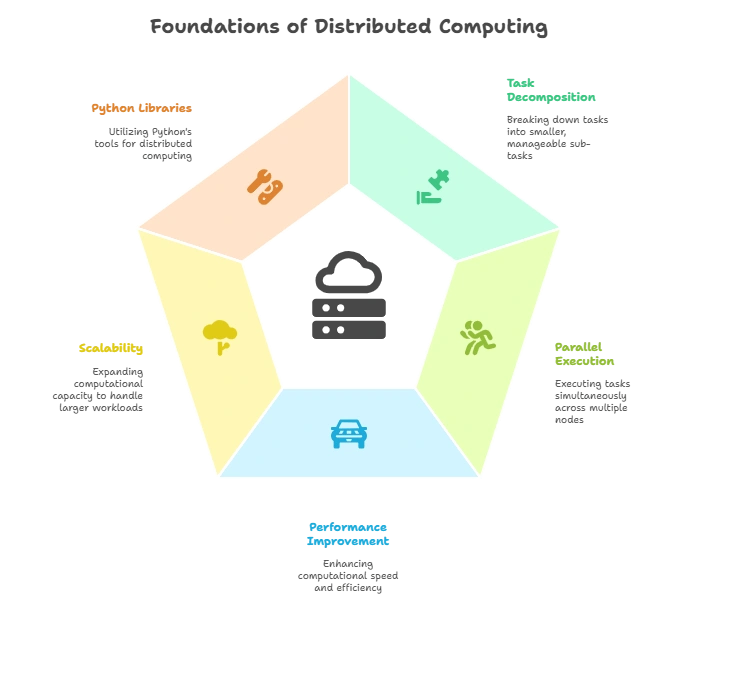Distributed Computing with Python
Distributed computing involves breaking down computational tasks into smaller sub-tasks and executing them across multiple computing nodes or devices. Python, with its rich ecosystem of libraries and frameworks, provides developers with powerful tools for building distributed computing solutions.
Introduction to Distributed Computing
What is Distributed Computing?
Distributed computing involves breaking down computational tasks into smaller sub-tasks and executing them across multiple computing nodes or devices. This approach allows for parallel execution of tasks, leading to improved performance and scalability.
Why Distributed Computing with Python?
Python offers a variety of libraries and frameworks for distributed computing, making it a versatile choice for building scalable and high-performance applications. By harnessing the power of distributed computing, developers can tackle complex computational problems efficiently and effectively.

Basic Concepts of Distributed Computing
Parallelism vs. Concurrency
Parallelism involves executing multiple tasks simultaneously, while concurrency involves managing multiple tasks concurrently. Understanding the differences between parallelism and concurrency is essential for designing and implementing distributed computing solutions.
Message Passing
Message passing is a fundamental concept in distributed computing, allowing different computing nodes to communicate and coordinate their activities. Libraries like Pyro and Celery provide abstractions for message passing in Python.
Getting Started with Parallel Programming in Python
Multiprocessing Module
Python’s multiprocessing module allows developers to create and manage multiple processes, enabling parallel execution of tasks across CPU cores. Let’s explore a simple example:
import multiprocessing
def square(x):
return x * x
if __name__ == '__main__':
with multiprocessing.Pool() as pool:
result = pool.map(square, [1, 2, 3, 4, 5])
print(result)
Explanation:
- We define a function
square(x)to calculate the square of a number. - We use the
multiprocessing.Pool()class to create a pool of worker processes. - We use the
map()method to apply thesquare()function to a list of numbers in parallel. - Finally, we print the result.
Threading Module
Python’s threading module allows developers to create and manage multiple threads within a single process, enabling concurrent execution of tasks. Let’s see an example:
import threading
def print_numbers():
for i in range(5):
print(i)
if __name__ == '__main__':
t1 = threading.Thread(target=print_numbers)
t2 = threading.Thread(target=print_numbers)
t1.start()
t2.start()
Explanation:
- We define a function
print_numbers()to print numbers from 0 to 4. - We create two threads (
t1andt2) targeting theprint_numbers()function. - We start both threads simultaneously using the
start()method.
Advanced Techniques in Distributed Computing
Asynchronous Programming
Asynchronous programming allows developers to write non-blocking code that can perform multiple tasks concurrently. Libraries like asyncio and Trio provide support for asynchronous programming in Python, enabling efficient utilization of resources in distributed computing environments.
Distributed Task Queues
Distributed task queues allow developers to distribute tasks across multiple computing nodes and execute them asynchronously. Libraries like Celery provide robust task queue implementations with support for distributed message passing, result tracking, and task scheduling.
Distributed computing with Python offers developers a powerful toolkit for building scalable, high-performance applications that can tackle complex computational tasks with ease. Happy coding! ❤️
